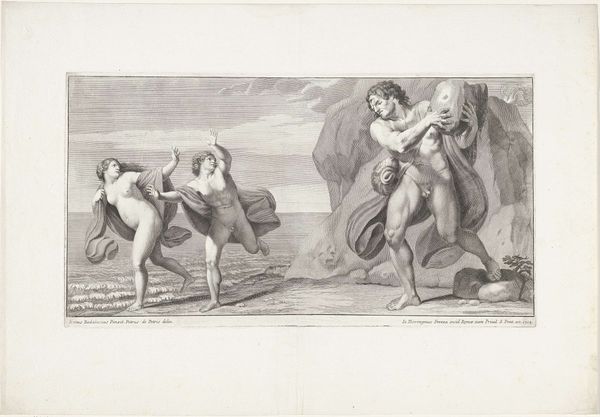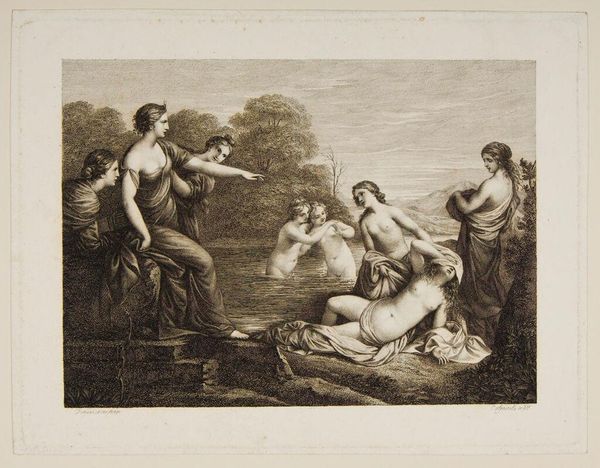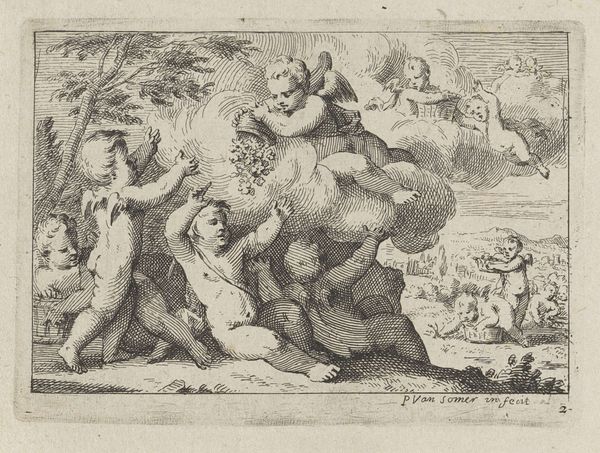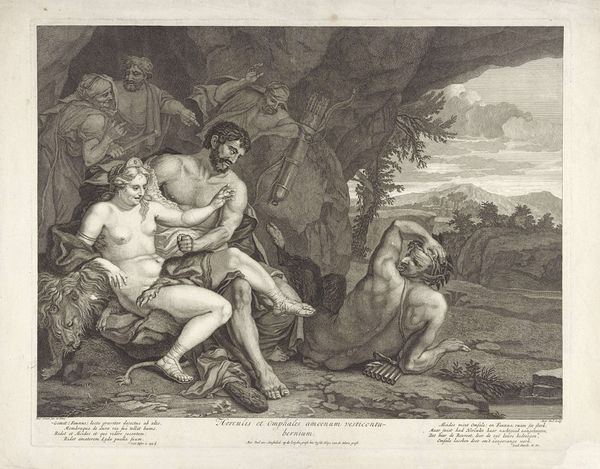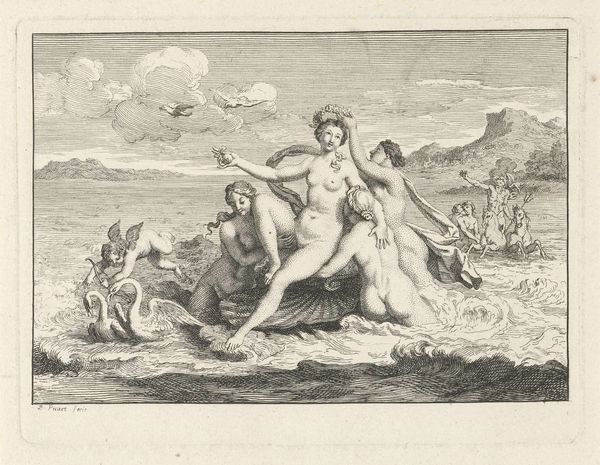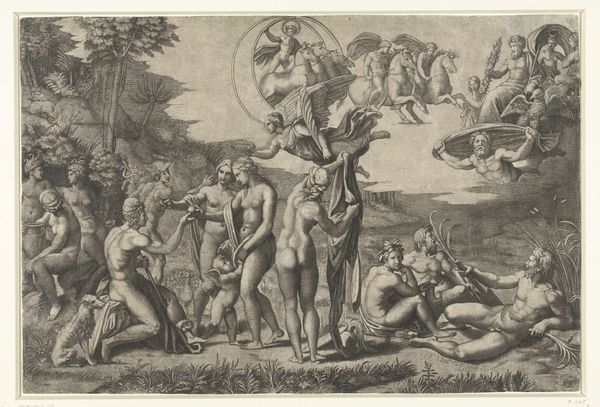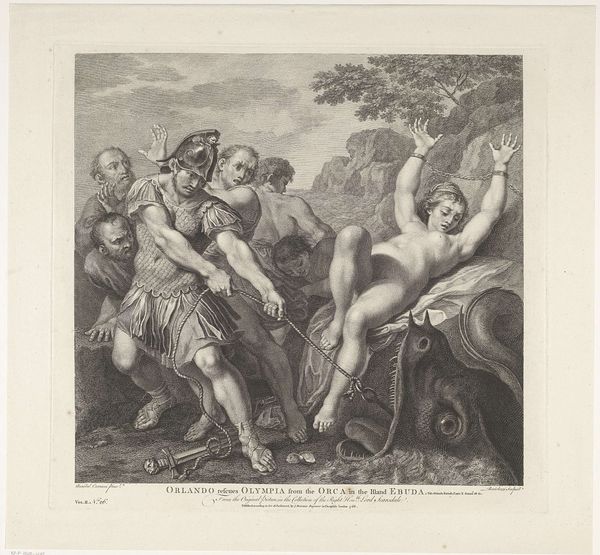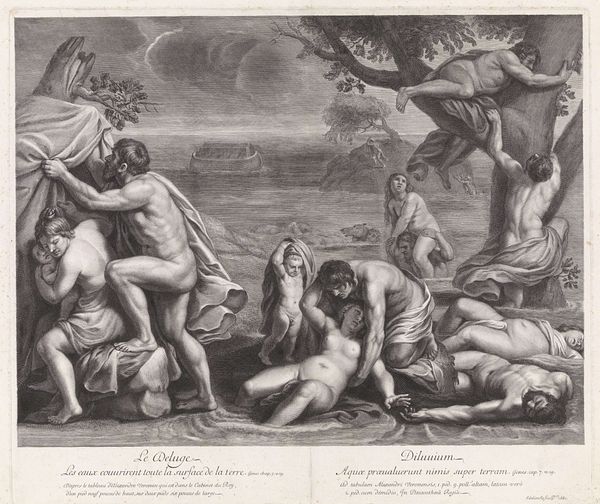
print, engraving
#
allegory
#
baroque
# print
#
old engraving style
#
landscape
#
classical-realism
#
figuration
#
line
#
history-painting
#
nude
#
engraving
Dimensions: height 295 mm, width 547 mm
Copyright: Rijks Museum: Open Domain
Curator: Here we have "Polyphemus Plays His Syrinx," an engraving by Giovanni Girolamo Frezza, dating to 1704. It’s a print, fairly linear, rendering a scene from classical mythology. Editor: It has this funny mix of awkwardness and eroticism that’s totally Baroque, don't you think? The big guy piping away on the left contrasts sharply with those water nymphs. Are they even water nymphs? The dolphins seem to suggest it... Curator: Absolutely, that interplay is classic Baroque. Look at how the engraving uses line to create depth. Consider, too, the social context: printmaking in this era was about reproduction and distribution, bringing classical themes to a wider, literate audience. The *means* by which this image reached its viewers is central to its purpose. Editor: That's the materialist take! I'm more struck by how Frezza captures Polyphemus in this surprisingly... sensitive pose. You know, one usually pictures him raging, but here he seems almost wistful, singing to a sea he can never truly touch. Like he's singing directly into the uncanny valley, if you get my meaning. Curator: It does engage with this allegorical language. Polyphemus embodies a brute power tempered – or, perhaps, deluded – by art. The very act of creating the print—engraving the plate, pulling impressions—echoes that process of taming a raw material. Editor: Okay, that makes sense! It's almost like Frezza’s showing us how even the monstrous can aspire to beauty…even if the final result is somewhat stiff! What’s this saying about art's power, its ability to almost humanize anything? And look, those dolphin-drawn nymphs don’t seem very impressed! I'm now realizing there’s humor lurking here! Curator: A reading certainly supported by the print’s dissemination as a relatively affordable luxury good. It brings these stories to households across Europe. It invites contemplation not just of myth, but also the material conditions of its creation and consumption. Editor: Right. So it makes one think. Thanks for all the insights. Curator: A pleasure.
Comments
No comments
Be the first to comment and join the conversation on the ultimate creative platform.

